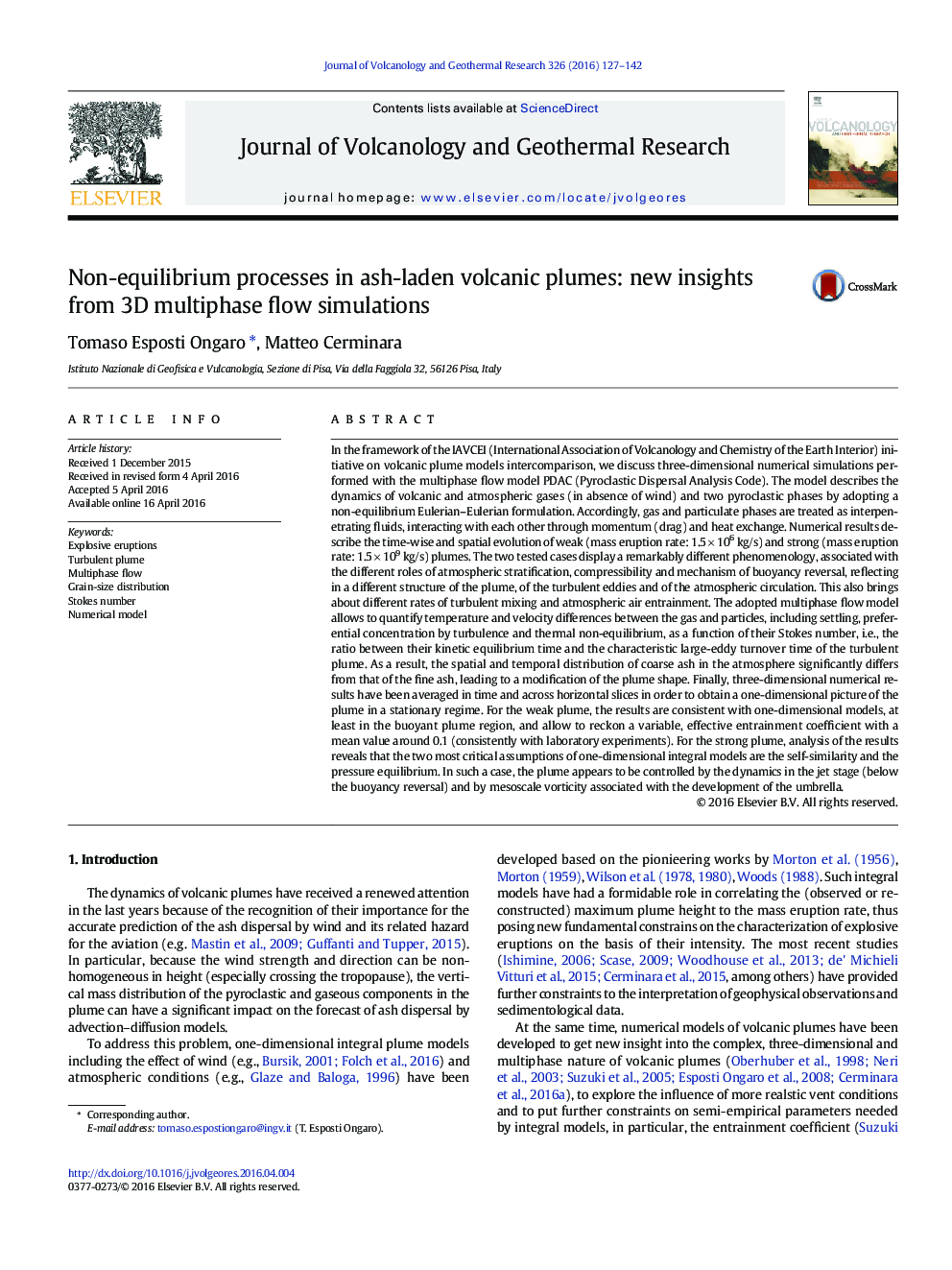| کد مقاله | کد نشریه | سال انتشار | مقاله انگلیسی | نسخه تمام متن |
|---|---|---|---|---|
| 4712883 | 1638296 | 2016 | 16 صفحه PDF | دانلود رایگان |

• Weak and strong plumes are simulated in 3D with a non-equilibrium gas–particle model.
• Multiphase effects have a secondary role in the analysed large-scale plume dynamics.
• Integral model assumptions and the entrainment hypothesis hold for weak plumes.
• In the strong plume case, a supersonic fountaining structure is formed.
• Atmospheric stratification hinders the achievement of self-similarity.
In the framework of the IAVCEI (International Association of Volcanology and Chemistry of the Earth Interior) initiative on volcanic plume models intercomparison, we discuss three-dimensional numerical simulations performed with the multiphase flow model PDAC (Pyroclastic Dispersal Analysis Code). The model describes the dynamics of volcanic and atmospheric gases (in absence of wind) and two pyroclastic phases by adopting a non-equilibrium Eulerian–Eulerian formulation. Accordingly, gas and particulate phases are treated as interpenetrating fluids, interacting with each other through momentum (drag) and heat exchange. Numerical results describe the time-wise and spatial evolution of weak (mass eruption rate: 1.5 × 106 kg/s) and strong (mass eruption rate: 1.5 × 109 kg/s) plumes. The two tested cases display a remarkably different phenomenology, associated with the different roles of atmospheric stratification, compressibility and mechanism of buoyancy reversal, reflecting in a different structure of the plume, of the turbulent eddies and of the atmospheric circulation. This also brings about different rates of turbulent mixing and atmospheric air entrainment. The adopted multiphase flow model allows to quantify temperature and velocity differences between the gas and particles, including settling, preferential concentration by turbulence and thermal non-equilibrium, as a function of their Stokes number, i.e., the ratio between their kinetic equilibrium time and the characteristic large-eddy turnover time of the turbulent plume. As a result, the spatial and temporal distribution of coarse ash in the atmosphere significantly differs from that of the fine ash, leading to a modification of the plume shape. Finally, three-dimensional numerical results have been averaged in time and across horizontal slices in order to obtain a one-dimensional picture of the plume in a stationary regime. For the weak plume, the results are consistent with one-dimensional models, at least in the buoyant plume region, and allow to reckon a variable, effective entrainment coefficient with a mean value around 0.1 (consistently with laboratory experiments). For the strong plume, analysis of the results reveals that the two most critical assumptions of one-dimensional integral models are the self-similarity and the pressure equilibrium. In such a case, the plume appears to be controlled by the dynamics in the jet stage (below the buoyancy reversal) and by mesoscale vorticity associated with the development of the umbrella.
Journal: Journal of Volcanology and Geothermal Research - Volume 326, 15 October 2016, Pages 127–142